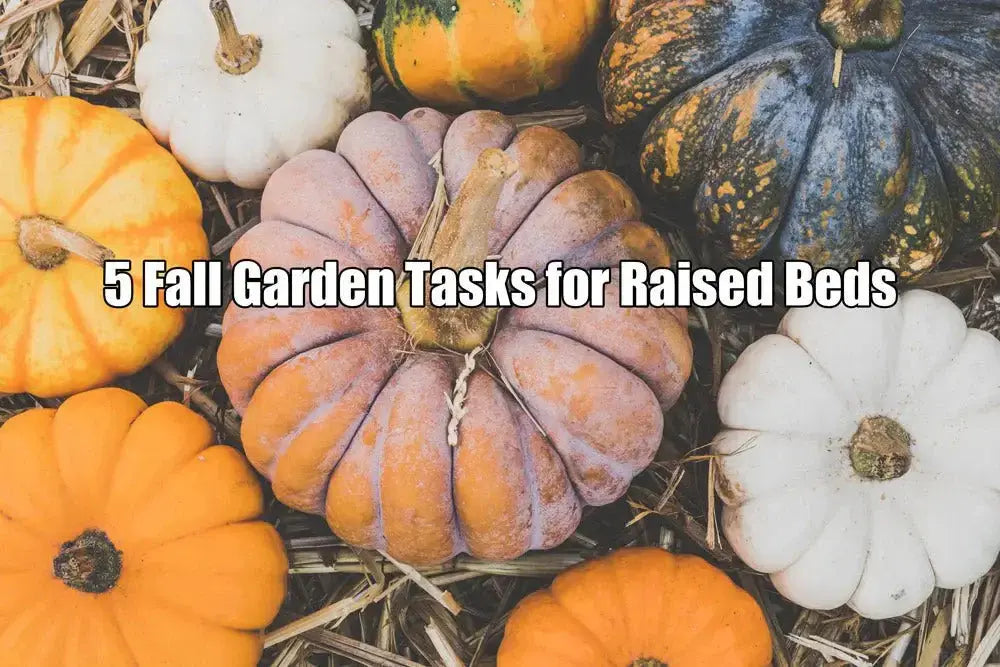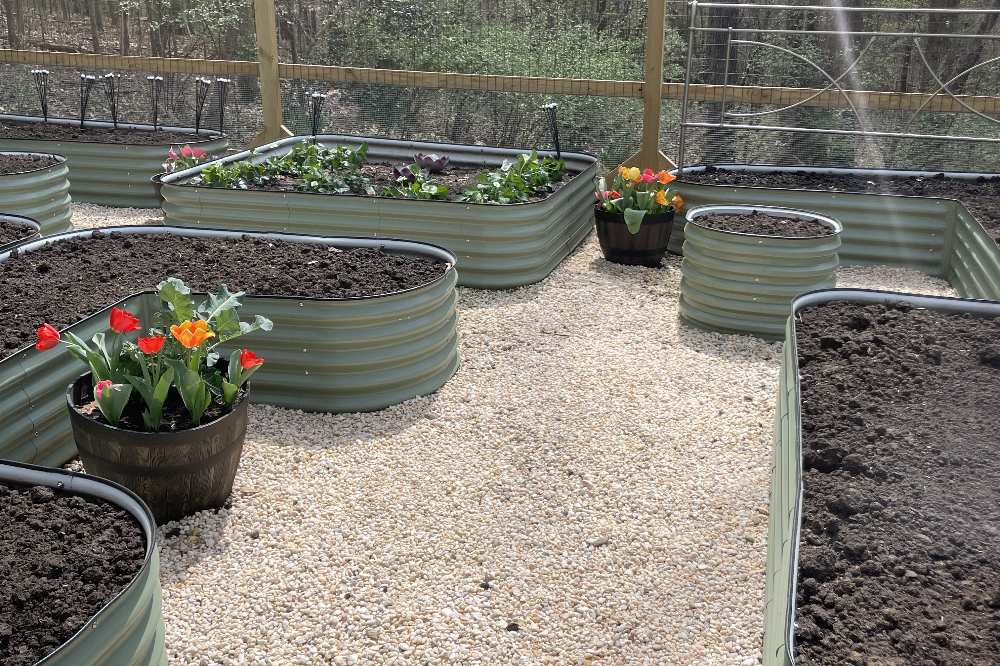Winter Soil Care Guide for Raised Garden Beds
Soil in metal raised garden beds isn’t just a pile of dirt. It's energy for the blossoming buds! Raised beds are high above the pest-infested, poorly-drained regular garden soil. The plants can enjoy nutritious soil and excellent drainage. Gardeners typically combine garden soil, compost, and other organic matter for the soil in a garden bed. This special mix balances water retention and drainage while also serving up various nutrients for the plants growing in the bed.
Steps to prepare raised bed soil for winter
- Remove plants: Start by pulling out all vegetable plants, weeds, or any other remaining plant material. Be sure to also remove any sticks or stones that might have surfaced during the growing season.
- Rake the soil: Use a rake to level your soil. This will help ensure that water drains evenly during the winter.
- Add compost: Spread a layer of compost over your soil in the raised bed. As it decomposes over the winter, it will add nutrients back into your soil, preparing it for planting in the spring.
- Mulch: If you don’t plant a cover crop, consider adding a thick layer of mulch to the raised beds. This will help protect your soil from erosion and may help regulate soil temperature as well.
- Protect the bed: Consider installing a raised garden bed cover. This can help protect your soil from the harsh winter weather.
All the efforts we made in the winter were to give the soil a good start for the spring growing season. With some extra care in the fall, you can help ensure you have a productive garden in the coming season.
Benefits of crop rotation in raised beds

1. Nutrient management
Different crops require different types and quantities of soil nutrients. Rotation can help ensure that one specific nutrient isn’t continually depleted. This helps maintain soil fertility over time.
2. Pest and disease control
A common plant disease or pest often targets specific plant species. By rotating crops, you can disrupt the life cycles of these pests or diseases, reducing their presence in your garden.
3. Weed suppression
Different crops have different growth habits. Some crops might shade the soil, reducing weed pressure.
4. Soil structure improvement
Different crops have different root structures. Some are deep and tap-rooted; others are shallow and fibrous. This variable root activity can help maintain a good soil structure, aiding water infiltration and retention.
5. Increases plant yield
With fewer pests and diseases, better nutrient availability, and improved soil structure, crop yields can be increased significantly through crop rotation.
FAQ: If I am not good at planning crop rotation, can I use tiered raised garden beds to prevent some issues like pests and weeds?
Using
Growing the same plants in the same soil year after year can lead to nutrient depletion and the buildup of disease organisms in the soil. Crop rotation helps solve these problems by varying the demands on the soil and disrupting disease cycles. Therefore, while tiered garden beds offer some benefits, they don’t eliminate the need for practices like crop rotation.
Winter Soil Maintenance Techniques
Soil maintenance tips
- Regularly inspect your soil for pests.
- Turn over your soil periodically to keep it aerated and healthy.
- Keep an eye on soil moisture and adjust your watering schedule as necessary.
- Remove weeds before they have a chance to take seed and spread.
- Regularly add compost or organic matter to the soil, keeping it nutrient-rich.
Use organic amendments
Good soil management is key to successful gardening. Adding organic materials like compost, well-rotted manure, leaf mold, and mulch to garden beds in the winter can help improve soil fertility for the next growing season and improve soil structure and capacity to hold water.
Ways to protect soil from erosion or degradation
- Use mulch: Covering the beds with straw, leaves, wood chips, or other organic materials can help protect your soil from winter weather and erosion.
- Plant cover crops: These can help protect your soil from erosion, improve its structure, and add nutrients.
- Keep the soil covered. Exposed soil is more prone to erosion. If you don’t plant a cover crop, at least keep the soil covered with mulch or a raised garden bed cover.
After-Winter Care for Garden Beds
Early spring soil preparation tips
First, check the condition of the soil. If it’s too wet, wait until it dries out some before working with it to avoid compacting it. Next, use a garden fork to gently turn and loosen the soil in the raised beds. This aerates the soil and makes it easier for plant roots to grow. But remember to do this only when the soil is dry enough to avoid the formation of clumps.
To start the garden beds quickly and early, please check the tips of How to Start A Raised Garden Bed in 3 Steps?
Assessing and replenishing nutrient levels
If you’ve noticed poor plant growth of nutrient deficiency, consider getting a soil test. A soil test will give you a detailed breakdown of your soil’s nutrient levels and pH and often include recommendations for amendments to add.
The three most important nutrients for plants are nitrogen (N), phosphorus (P), and potassium (K). Other important nutrients include calcium, magnesium, and sulfur.
Add a balanced, slow-release organic fertilizer to the soil in the early spring to replenish nutrient levels.
Conclusion
Soil maintenance in raised beds during the winter is crucial for ensuring a successful, productive garden in the following growing season. Remember, the soil is the foundation of any garden, and investing time in its care, even in the winter, will result in a bountiful harvest in the future.


